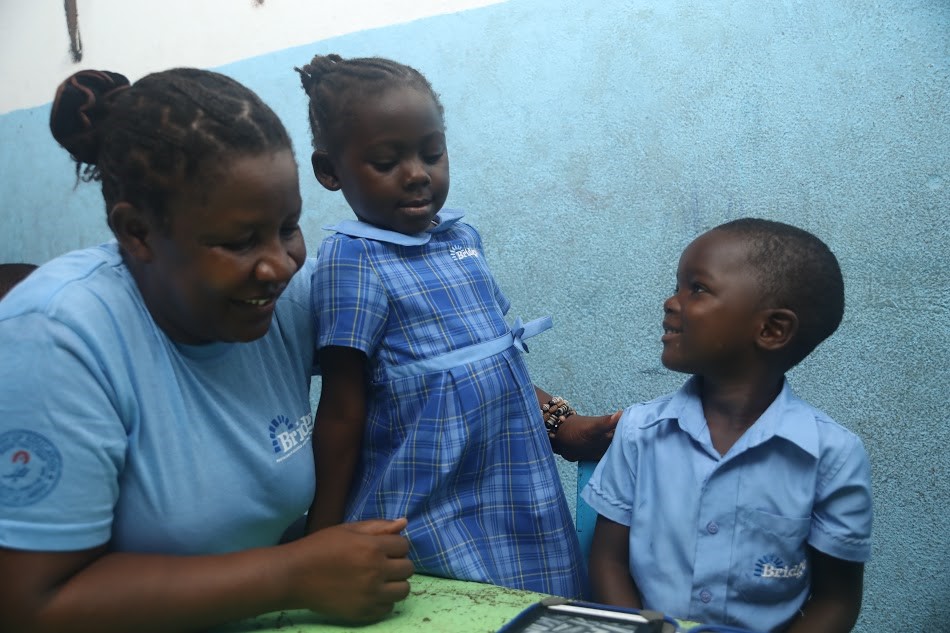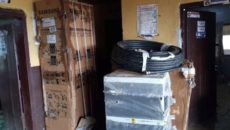Bridge International Academies is a disruptive force. It disrupts the status quo through pursuing education reform in developing economies, where 263 million children — 61 million primary school children — are out of school and 330 million children are in school but not learning.
As part of a disparate and complex ecosystem, Bridge has served over 250,000 children in communities that live within the World Bank’s definition of extreme poverty, living on under US$1.90 dollars a day per capita. It has been estimated in Kenya alone that 46 percent the population is living in poverty. These are families whose futures have been limited by poor schools, absent teachers, and limited learning.
These are communities on the front line of education reform. Amidst the global development community, there is a coalescence around the knowledge that education is a primary driver of prosperity; that an educated population is a healthier population, and that an educated population is less likely to be mired in conflict.
There is a unified call to disrupt the poverty cycle that failing schools maintain, that if we are serious about tackling poverty and insecurity, we must change the status quo of education. That is the global driver behind achieving sustainable development goal number four.
However, the question that remains to be answered is how.
The answer to that, in all likelihood, lies in how technology can be used to change the model of schooling from one where students’ learning (or lack thereof) is divorced from the creation of teaching and learning resource materials, to one where all materials and lesson designs that affect a child’s learning are shaped in response to how the child is learning.
This could be at the level of the child, where a software program responds to the child’s work. Or it could be at the level of the class, where a teacher’s use of materials and children’s assessments on a given unit of learning lead to changes in the lessons of the next areas of content; and data from thousands of classrooms shape the publication of lessons and textbooks for the next year, and inform integrated teacher professional development.
Education technology has gone through a Cambrian explosion over the last decade due to the development of 2G, broadband, smartphones, and e-ink. Smart integration of technology into teaching practice augments a teacher’s own abilities and enables accountability for learning to be measured in both schools and school systems.
In many classrooms in Africa, accountability for learning is weak, and often, the majority of children leave primary school still unable to read, as in Liberia, or unable to pass the national exam, as in Kenya.
This is not a criticism; it is a reality on the ground in many developing countries that people living in the U.S. or U.K. often fail to adequately contextualize or understand. Many of these schools are dealing with communities that live beneath the poverty line, that has been afflicted with diseases, famine, and conflict; communities where generations have been failed by education provision.
Yet, technology has enabled the classroom to become accessible without standing in it, to ensure that there is quality learning being delivered; that teachers are trained and continuously supported, that assessment and monitoring is thorough. Bridge analyzes over a billion data points and learns quickly how to help students to learn and teachers to engage.
Technology, combined with significant investment in research and development, has enabled us to develop schools that are focused on teachers teach and how children learn. We design everything we do with a focus on outcomes for children, not inputs. Through this focus, we have created schools that empower children to learn substantially more than their peers.
The Kenyan Certificate of Primary Education is the country’s national exam that almost 1,000,000 students take each year at the end of eighth grade. In 2016, pupils who attended Bridge for at least four years had an average pass rate of 74 percent compared to an estimated national pass rate of 49 percent.
In 2015, it was 63 percent versus a 49 percent national average. This is proof of delivering improved learning for children at scale, over consecutive years. In any other field of work, this magnitude of improvement, consistent over two years would be hailed as a remarkable achievement.
While the results in Kenya are exciting, the potential for the most far-reaching change in the education sector does not lie in ensuring that parents and children have an alternative to failing public schools. It is showing how failing public schools can become powerful public schools — schools that lay the foundation for the nation’s future health and wealth, for all.
Demonstrating that transformational learning gains can be delivered within limited national education budgets opens the possibility of countries embracing reform through public-private partnership. This kind of model is already embraced across many sectors such a healthcare and energy, so why not in education?
Proving that effective education can be delivered at scale while being financially sustainable for the long term is revolutionary. No longer would countries need to rely on perpetual aid donations or grant funding to prop up their education systems. Children will be really learning and the consequences of that for stability, growth, and prosperity, both on a micro and macro level, are immense.
Partnership Schools for Liberia is a testament to this, it is why the world is watching so closely. It is also why critics of the program are so loud.
A recent study conducted by Pencils of Promise, the University of Liberia, the Ministry of Education, and Bridge revealed that after only four months of the school year, there is a clear indicative trend showing improved learning in Bridge-managed public schools. Four times as many children learning at a Bridge-managed public school had achieved reading fluency than at other matched public schools.
We have opened our doors to world-renowned academics, and are grateful for their support in this project to understand what is working and what we can improve. There are two randomized controlled trial studies underway as well. We look forward to what those results may add to the growing body of evidence that Bridge’s technology-enabled, and integrated approach to supporting teachers, creating materials, and managing schools could revolutionize education in the developing countries.
We are at a particular moment in time where technology, social impact investment, and political willpower is coming together for good, globally and in the countries we serve. Education reform needs many partners working on behalf of the children and the communities who are currently being failed.
At Bridge, we do not think we provide the only solution, but we know we are one solution. We trust that by showing that radical learning gains are possible on limited budgets, this example will inspire other social entrepreneurs and large education companies to design additional solutions effective on governments’ and parents’ limited budgets.
We are not even a decade old. There are hurdles, complexities, and challenges, both operational and political, that we face every day in the countries in which we operate. We are always adapting and learning.
We are proud to be part of the large group of education reformers, advocates, investors worldwide who say that a generation should not have its future closed while we debate education ideology.
We are proud of the communities we serve, the families that choose us and the children that benefit. We are proud that they stand up for their right to choose, that they demand a better school for their children and that they continue to try and have their voices heard.
Featured photo courtesy of Bridge International Academies



